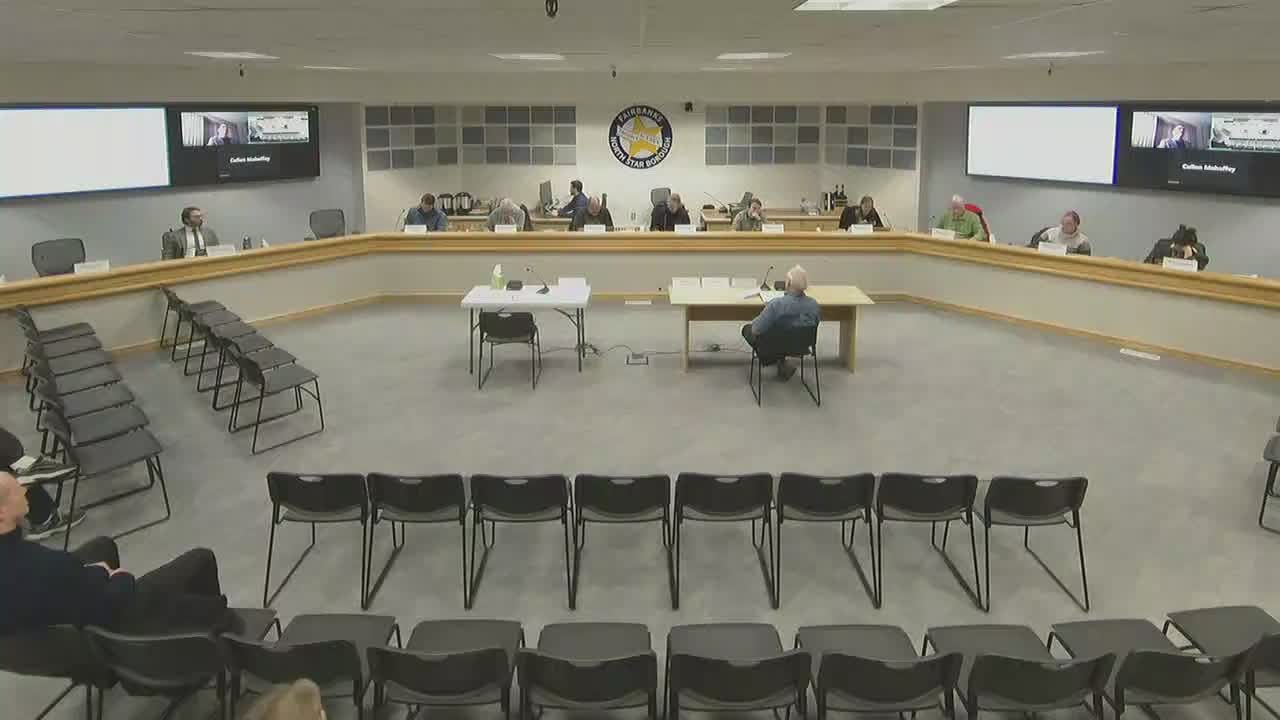Riverbud Discovery raises concerns over proposed waterway setback at historic Chena River site
November 12, 2024 | Fairbanks North Star (Borough), Alaska
This article was created by AI summarizing key points discussed. AI makes mistakes, so for full details and context, please refer to the video of the full meeting. Please report any errors so we can fix them. Report an error »

In the heart of Fairbanks, Alaska, the Planning Commission meeting on November 12, 2024, unfolded with a blend of history and concern as local stakeholders voiced their perspectives on land use and development. Among the attendees was a representative from Riverbud Discovery, who shared a compelling narrative about their long-standing connection to a historic parcel of land along the Chena River.
The speaker, who has roots in the area stretching back over six decades, recounted the property’s transformation from a bustling freight yard in the 1940s to its current role as a boat yard and storage facility. This site, once a hub for shipping along the Yukon River, has evolved but remains integral to the operations of Riverbud Discovery. The representative emphasized the importance of maintaining access to the riverbanks for their marine activities, which include docking boats and conducting maintenance.
However, the discussion took a turn as concerns were raised regarding proposed waterway setbacks that could impact their operations. The representative expressed apprehension about these setbacks, which were not part of the original application they had agreed to. “We don’t want our traditional use and our current use to be taken away or limited,” they stated, highlighting the potential implications for their business and the community.
The meeting also touched on the recent disposal of adjacent vacant lots, GL10 and GL9, which the company had previously owned. While the representative expressed support for development and improvements in the area, they remained cautious about how new regulations might affect their longstanding practices.
As the meeting progressed, it became clear that the balance between development and preserving traditional uses of land remains a critical issue for the Fairbanks North Star Borough. The discussions underscored the need for careful consideration of local history and current operations as the community navigates its future growth. The outcome of these deliberations could shape not only the landscape of Fairbanks but also the livelihoods of those who have called it home for generations.
The speaker, who has roots in the area stretching back over six decades, recounted the property’s transformation from a bustling freight yard in the 1940s to its current role as a boat yard and storage facility. This site, once a hub for shipping along the Yukon River, has evolved but remains integral to the operations of Riverbud Discovery. The representative emphasized the importance of maintaining access to the riverbanks for their marine activities, which include docking boats and conducting maintenance.
However, the discussion took a turn as concerns were raised regarding proposed waterway setbacks that could impact their operations. The representative expressed apprehension about these setbacks, which were not part of the original application they had agreed to. “We don’t want our traditional use and our current use to be taken away or limited,” they stated, highlighting the potential implications for their business and the community.
The meeting also touched on the recent disposal of adjacent vacant lots, GL10 and GL9, which the company had previously owned. While the representative expressed support for development and improvements in the area, they remained cautious about how new regulations might affect their longstanding practices.
As the meeting progressed, it became clear that the balance between development and preserving traditional uses of land remains a critical issue for the Fairbanks North Star Borough. The discussions underscored the need for careful consideration of local history and current operations as the community navigates its future growth. The outcome of these deliberations could shape not only the landscape of Fairbanks but also the livelihoods of those who have called it home for generations.
View full meeting
This article is based on a recent meeting—watch the full video and explore the complete transcript for deeper insights into the discussion.
View full meeting
